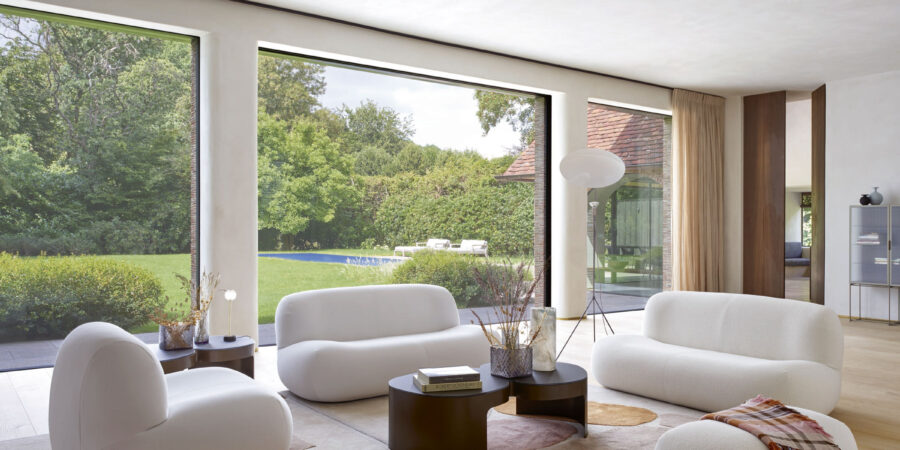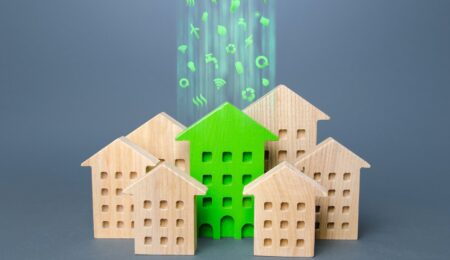Modern living meets sustainable choices in the pursuit of conscious comfort. As our awareness of environmental impact grows, so does the desire to create homes that prioritize both comfort and sustainability. This guide explores innovative and eco-friendly ideas to transform your living space into a haven of conscious comfort.
1. Renewable Energy Sources
Embrace renewable energy sources to power your home sustainably. Solar panels, wind turbines, and geothermal systems are excellent options to reduce reliance on non-renewable energy. Investing in these technologies not only lowers your carbon footprint but also leads to long-term energy savings.
2. Passive Design Principles
Incorporate passive design principles into your home to maximize natural heating, cooling, and lighting. Orient your home to capture sunlight, utilize thermal mass, and implement proper insulation. These strategies enhance energy efficiency and create a comfortable living environment without excessive reliance on mechanical systems.
3. Sustainable Building Materials
Opt for sustainable building materials when constructing or renovating your home. Choose materials with low environmental impact, such as bamboo, reclaimed wood, recycled metal, or recycled glass. Sustainable choices not only support responsible sourcing but also add a unique and eco-conscious touch to your living space.
4. Energy-Efficient Appliances
Upgrade to energy-efficient appliances that carry the ENERGY STAR label. From refrigerators to washing machines, these appliances are designed to consume less energy while maintaining high performance. Conscious comfort aligns with energy-conscious choices, contributing to a more sustainable home environment.
5. Water Conservation Practices
Implement water conservation practices to reduce your household water consumption. Install low-flow faucets, toilets, and showerheads to minimize water usage. Additionally, consider harvesting rainwater for outdoor use, contributing to both water conservation and a greener landscape.
6. Indoor Air Quality Improvement
Prioritize indoor air quality by choosing non-toxic finishes and materials. Opt for paints, adhesives, and furniture with low or zero volatile organic compounds (VOCs). Integrate natural ventilation strategies to bring fresh air indoors, promoting a healthier and more comfortable living environment.
7. Smart Home Technologies
Embrace smart home technologies to optimize energy use and enhance convenience. Smart thermostats, lighting controls, and home automation systems allow you to manage energy consumption efficiently. These technologies contribute to conscious comfort by providing a seamless and eco-friendly living experience.
8. Sustainable Furniture Choices
Furnish your home with sustainable furniture made from responsibly sourced materials. Look for pieces crafted from reclaimed wood, bamboo, or recycled materials. Sustainable furniture options not only add character to your home but also align with conscious comfort principles.
9. Greenery and Biophilic Design
Incorporate greenery and biophilic design elements into your home to connect with nature. Indoor plants, natural materials, and ample natural light contribute to a sense of well-being and conscious comfort. Biophilic design principles aim to create environments that foster a deep connection with the natural world.
10. Minimalism and Decluttering
Adopt a minimalist approach to design and declutter your living space. Minimalism not only promotes a sense of tranquility but also reduces the need for excess consumption. Conscious comfort embraces simplicity, creating a home environment focused on what truly brings joy and comfort.
Conclusion: A Home of Conscious Comfort
Conscious comfort in modern living is an intentional choice that combines luxurious living with sustainable practices. By integrating these eco-friendly ideas into your home, you’re not just creating a comfortable living space; you’re cultivating a haven of conscious comfort that reflects your commitment to a more sustainable and harmonious lifestyle.





Leave a Reply